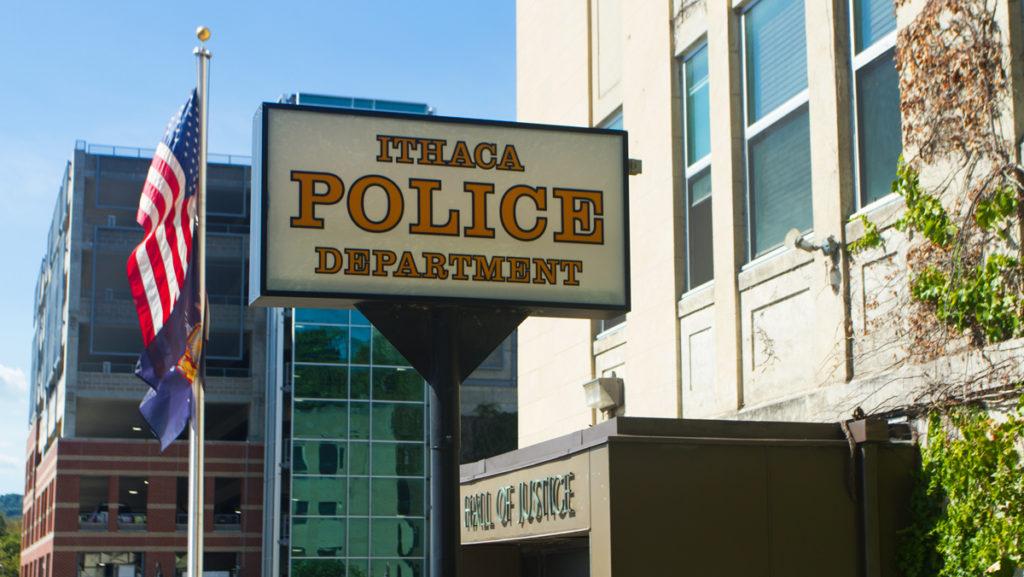Roughly nine months after the killing of George Floyd, the Tompkins County Legislature and the Ithaca Common Council each voted to approve a set of resolutions seeking to reform local law enforcement March 30 and 31, respectively. The resolutions, drafted by the Reimagining Public Safety Collaborative, were in response to Gov. Andrew Cuomo’s executive order in June directing municipalities with police forces to develop a plan to address community engagement and racial bias by April 1.
The collaborative was a joint initiative by Tompkins County, the City of Ithaca and the Center for Policing Equity (CPE), a nonprofit that collects data on police bias. The collaborative’s 98-page draft report was publicly released Feb. 22, after which it was amended by lawmakers, and the community was invited to provide feedback. The final plans include city-specific resolutions, county-specific resolutions and joint resolutions for the city and county. These resolutions commit to reforms like diversifying recruitment tactics, implementing an alternative system for crisis intervention and developing a public safety community dashboard.
One of the reforms adopted by the city is to create a Department of Public Safety (DPS), initially named the Department of Community Solutions and Public Safety, which would be led by a civilian and eventually replace the Ithaca Police Department (IPD). It will include a new team of unarmed first responders for certain nonviolent calls while maintaining its armed police officers. A task force was also created to design and implement the new department.
Since the draft report was made public, the Ithaca Police Benevolent Association (IPBA), the IPD’s union, has accused Mayor Svante Myrick of “union busting.” He answered such criticisms at a March 3 Common Council meeting, by which time a petition opposing the creation of the DPS had garnered over 1,000 signatures. The final report, however, recognizes the IPBA’s right to collectively bargain, protects its members’ benefits and ensures that all police officers will retain their employment and rank without having to reapply.
Paula Ioanide, professor in Ithaca College’s Center for the Study of Culture, Race and Ethnicity (CSCRE), participated in one of five working groups that helped compose the draft report. Although the reforms do not affect Ithaca College Public Safety or Cornell Police, she said they could still be beneficial to students.
“I think the presence of unarmed officers will allow for the building of relationships with the community that were not possible before when the focus was only on enforcement and not on actually knowing people,” she said. “Where it’s going to impact college students a lot is that instead of getting an armed police officer to show up to a noise complaint, for example, you are much more likely to get a public safety officer to show up in a much less threatening way because they are unarmed and because they are hopefully going to be trained to be much more responsive to respectful interaction.”
At the county’s meeting March 30, the legislature passed an amendment to remove the resolution transferring ownership of the SWAT Mobile Command Vehicle from the IPD to the county’s Department of Emergency Response. Instead, the legislature resolved to analyze the usefulness of the vehicle.
Dominick Recckio, communications director for Tompkins County, said the amendment was introduced because the county voted on its resolutions one day prior to the city.
“The county decided that it wanted to know what the city was planning on doing with it first before it made further plans,” he said. “Also, there’s some disagreement on how it should be made available for police officers, so I think the city wanted to take the first stab at deciding what actions would happen with it before the county followed through with its full plan.”
Ioanide said she was glad the SWAT vehicle would likely be moved, but she thought the resolution did not go far enough.
“I was disappointed to see that it stayed in the recommendations,” she said. “The recommendations intend to transfer the SWAT truck to an emergency response unit, but they don’t take a position on the SWAT team. For me, any militarized police unit is incompatible with the framework of community policing.”
Crimes included in the National Incident-Based Reporting System increased in the City of Ithaca by approximately 32% from 2019 to 2020.
The legislature added another resolution to develop an outreach plan that would connect law enforcement with residents. The Common Council followed suit in adopting a similar plan.
Josh Young, deputy senior vice president of Justice Initiatives for the CPE, said community input shaped the reforms from the summer through March.
“Part of the process was doing focus groups with very specific vulnerable communities,” he said. “Those groups were identified and engaged with to get their ideas, ask questions and dialogue with them. So, I want to say there were over 20 different groups that we oversampled to make sure their voices were elevated.”
With the final resolutions approved, the county and city will send them to the New York State Governor’s Office. The DPS’s task force will submit recommendations, including budget estimates, naming conventions and a timeline for public review and comment to the Common Council by Sept. 1.








